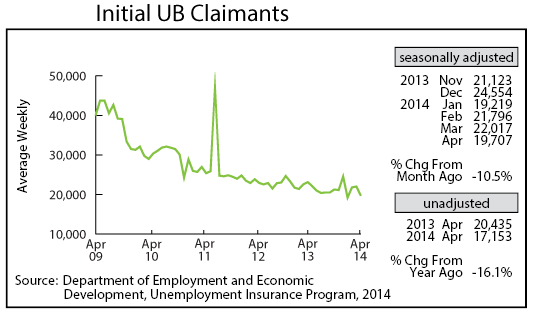by Dave Senf
May 2014
Note: All data except for Minnesota's PMI have been seasonally adjusted. See the feature article in the Minnesota Employment Review, May 2010, for more information on the Minnesota Index.
The Minnesota Index barely increased in April, inching up just 0.1 percent for the second consecutive month. The index has been losing momentum since the beginning of the year as Minnesota's job growth has stalled out. Declining wage and salary employment and waning average weekly manufacturing hours held the index in check in April despite a drop in the unemployment rate. The index hasn't increased this slowly over a two-month period since early 2010. The U.S. index, which also slowed during the first few months of the year, rebounded in April, climbing 0.3 percent.
The recent slowdown in both Minnesota and U.S. indices is consistent with a national economy that shrank during the first quarter of 2014. U.S. GDP growth for the first quarter was revised down to a negative 1.0 percent on a seasonally adjusted annual rate basis. The drop marked the economy's first contraction in three years with a large share of downturn blamed on the severe winter weather. Most economists see the U.S. economy rebounding sharply during the second quarter which should help pull Minnesota out of its early 2014 doldrums. Minnesota's economy, which increased slightly faster than the U.S. economy during the last six months of 2013, has been lagging behind U.S. growth since 2014 began.
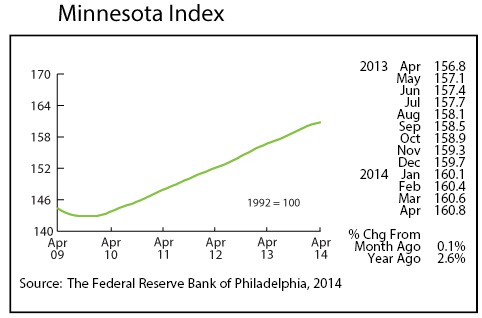
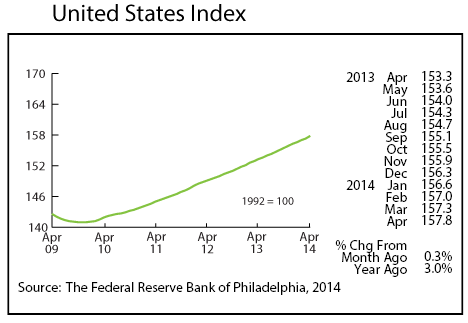
Minnesota's adjusted Wage and Salary Employment crashed in April with 4,200 jobs lost. April's job decline was the steepest since July 2013. The decline would have been even worse if not for the addition of 1,500 public sector jobs. The loss of 5,700 private sector jobs was the highest since May 2012. Cutbacks occurred in seven sectors with Construction, Professional and Business Services, and Leisure and Hospitality reducing payrolls the most. The only positive job development was 2,400 new manufacturing jobs.
Job growth over the year in Minnesota remained unchanged from last month at 1.5 percent while the U.S. rate inched up to 1.7 percent. Minnesota's job growth has slipped below the national rate over the last few months.

The Minnesota Leading Index inched up for the second straight month in April after having recorded its lowest reading in four years in February. The uptick is promising since a rising leading index points toward stronger economic activity over the next six months.
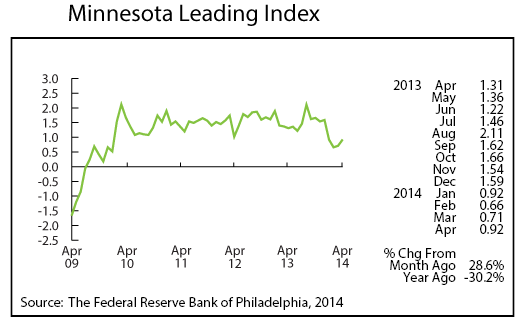
Minnesota's Purchasing Managers' Index (PMI) retreated a bit from last month's three-year high, falling off to a still very healthy 64.9 reading in April. The index has now been above 60 for three consecutive months pointing toward improving growth in the next three to six months. The strength of this indicator is inconsistent with an economy that is stuck in neutral. Minnesota's PMI has easily topped the U.S. PMI over the last five months which means that Minnesota businesses are more optimistic about future growth than their national counterparts.
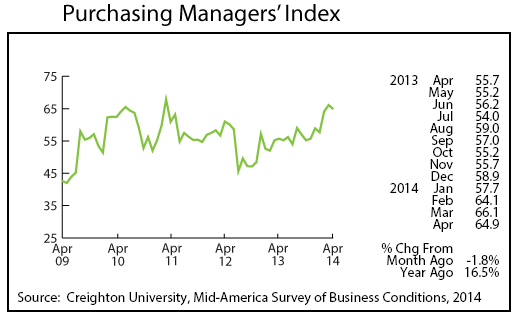
Adjusted Residential Building Permits moved backward in April, declining 22.6 percent. Minnesota's home building market, like many markets across the nation, after picking up speed in early 2013, began to stall out during the second half of last year. The home building market has improved over the last few years but the improvement has been very uneven.
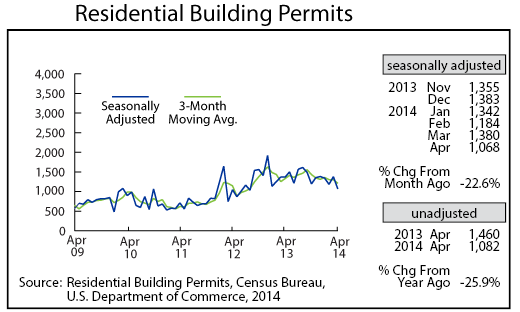
Adjusted Manufacturing Hours tailed off for the second month in a row in April, sliding to a still robust 41.6 hours per week. The factory workweek has been above 41 hours for 14 straight months which is the longest streak above 41 hours since 2000. Minnesota's factory workweek remains high by historical standards, indicating manufacturing in the state is in expansion mode.
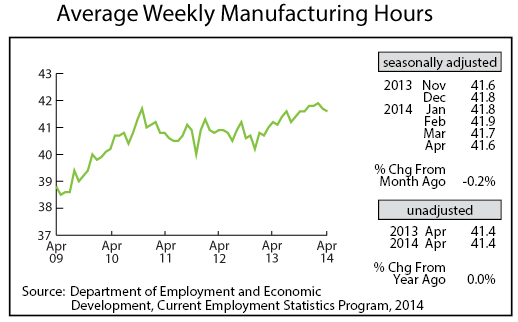
Manufacturing Earnings also slid in April falling off to $815.91, the smallest factory paycheck in over a year.
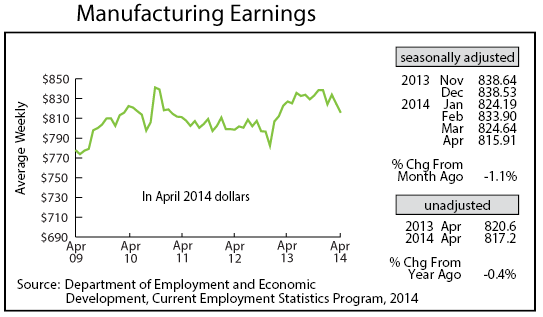
Minnesota's adjusted online Help-Wanted Ads declined sharply for the second consecutive month in April, sending the ad level down to its lowest level in nearly three years. The drop-off, if it holds, implies that labor demand in Minnesota has tailed off. Ads in Minnesota shrank 10 percent in April while increasing 0.6 percent nationwide.
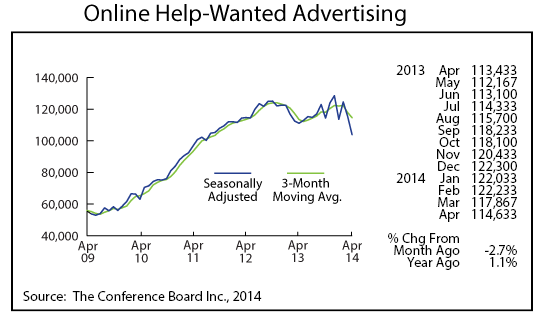
Adjusted Initial Claims for Unemployment Benefits (UB) dropped in April, falling below 20,000 for the second time this year. Monthly initial claims have fallen from 1.5 percent of the labor force during the worst of the recession in 2009 to 0.7 percent in April. During the boom years of the late 1990s, initial claim filings dipped to 0.5 percent of the labor force.
